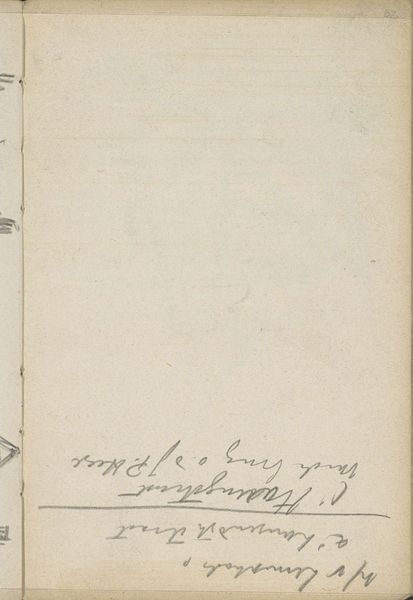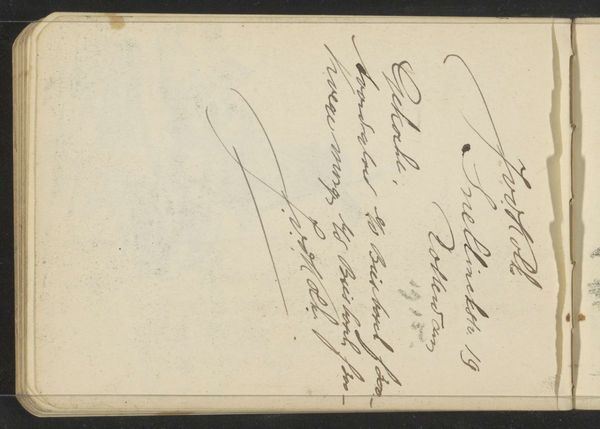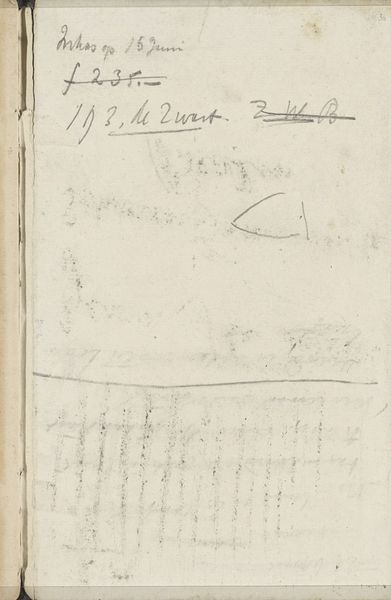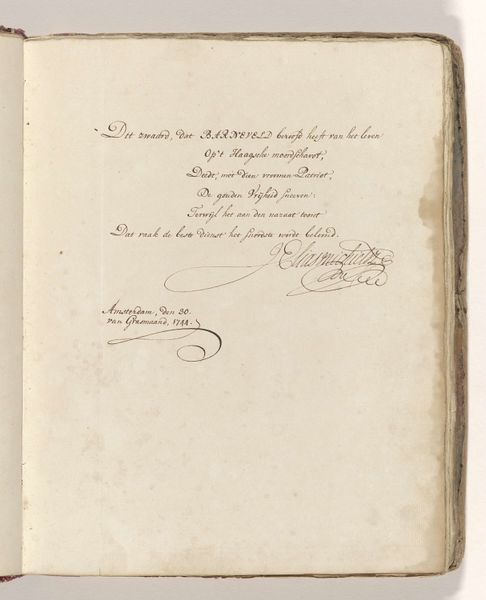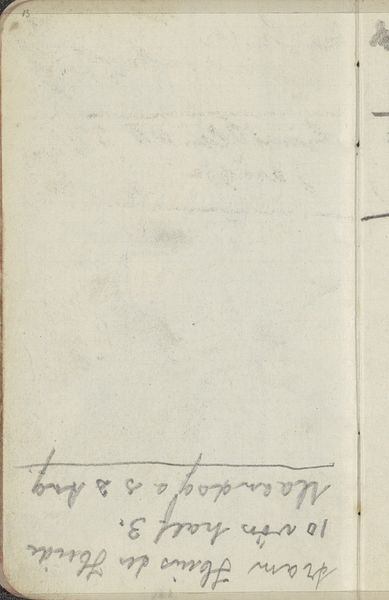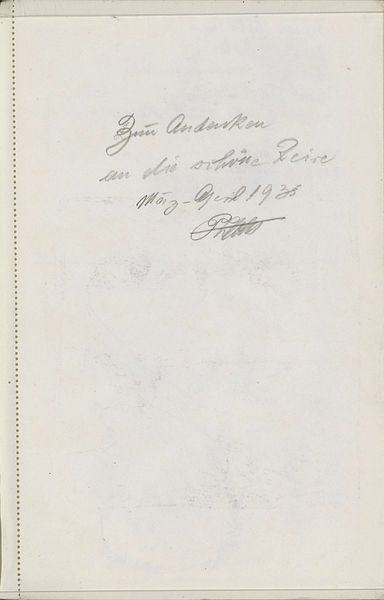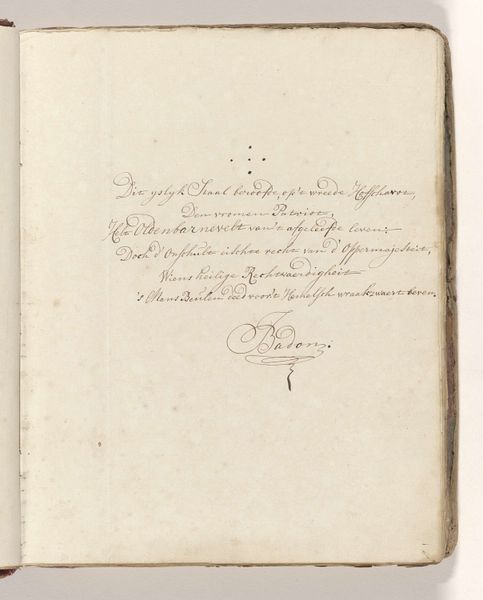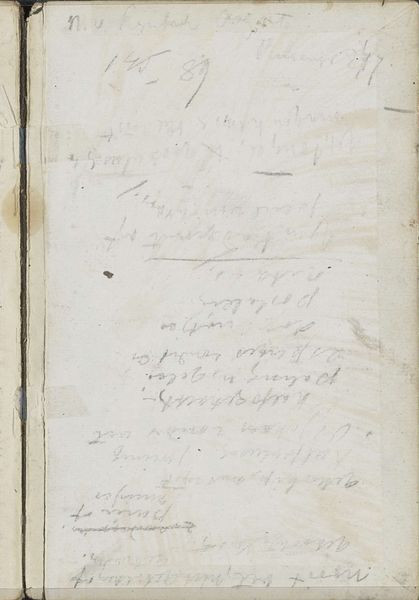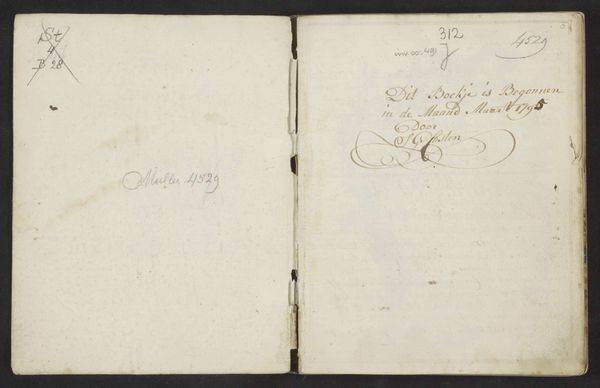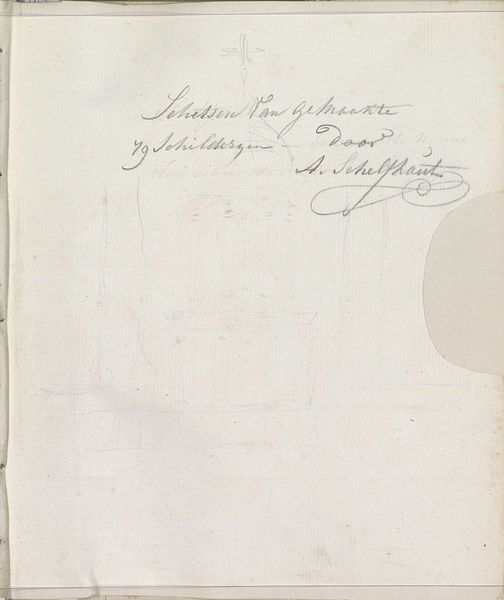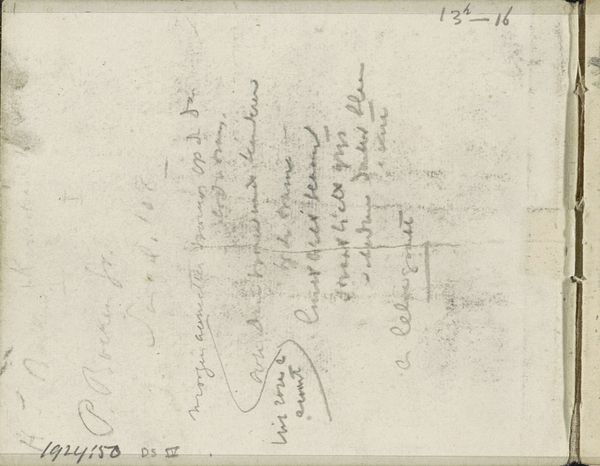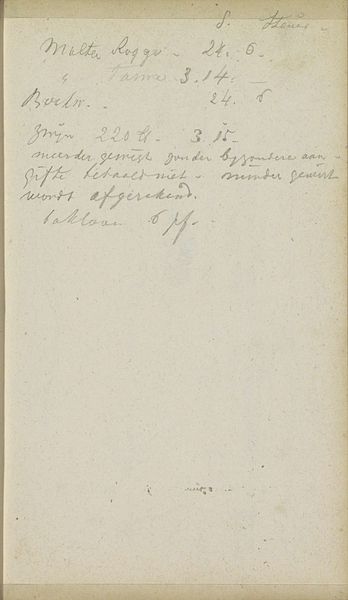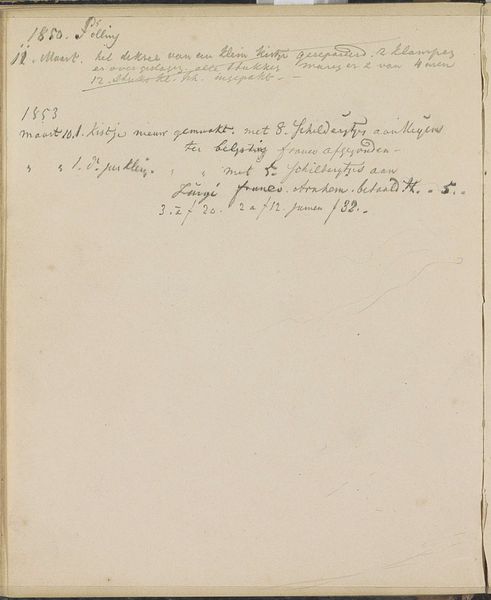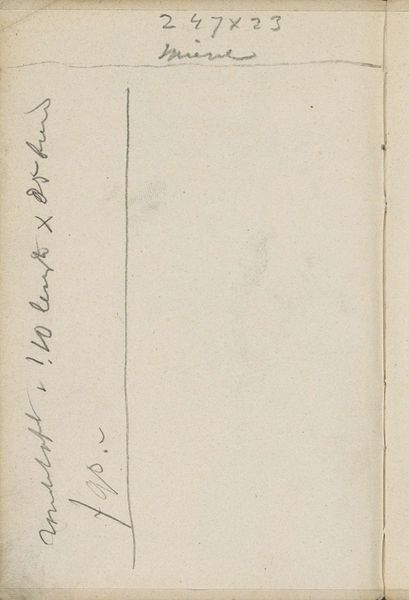
Copyright: Rijks Museum: Open Domain
Curator: So, this is "Annotaties" by George Hendrik Breitner, made in 1892. It's a drawing in ink on paper, currently held at the Rijksmuseum. Editor: My first impression is this is the ghost of words – fleeting thoughts captured but almost faded, like a half-remembered dream. The smudging gives it this sense of something disappearing. Curator: I think that impression of transience speaks to Breitner's approach to urban life and its representation. He often utilized quick sketches to capture the fleeting moments of everyday life in Amsterdam. The immediacy is palpable; we see the paper and the spontaneous gestures of the ink. Editor: It's more than just notes, isn't it? There's a real tactile quality. I can almost feel the scratch of the pen on that old paper. And look at how the text bleeds slightly. Do you think it was written quickly, perhaps in a hurry? Curator: Almost certainly. This wouldn't have been meant as a finished piece, more likely notes jotted down in a sketchbook while observing a particular scene, or perhaps lines recalled to describe it. The style leans into what we identify as Impressionism, where capturing the essence of a moment overrides detailed precision. Editor: Exactly. And you know, sometimes the roughest sketches, the things intended only for the artist’s eye, are the most revealing. It’s a pure glimpse into his thought process, unfiltered. Curator: That's interesting because, from a material perspective, this also invites questions of access and ownership of creative means. How does the relative affordability and ease of obtaining paper and ink shift artistic possibilities? Editor: Definitely. It democratizes it somewhat. It means the everyday person, or even someone like Breitner capturing everyday moments, could record observations so quickly. No pressure for grand gestures here, just simple tools yielding authentic moments. Curator: Thinking about its display now in a place like the Rijksmuseum, there's an interesting tension. This scrap of impermanent documentation is now carefully preserved and framed, valued both as a work in itself and for the insights it gives us into Breitner's other works. Editor: Yes, the journey from fleeting note to venerated object is fascinating. It reminds us to pay attention to what might be discarded – to see value and even art in the margins. It's more a story that way. Curator: I think looking at "Annotaties", we realize even what seems informal holds value, speaking to context, process, and perception. Editor: It has this strange allure – that whisper of something unsaid, that invitation into someone's artistic headspace. Very effective for a collection of annotations.
Comments
No comments
Be the first to comment and join the conversation on the ultimate creative platform.
